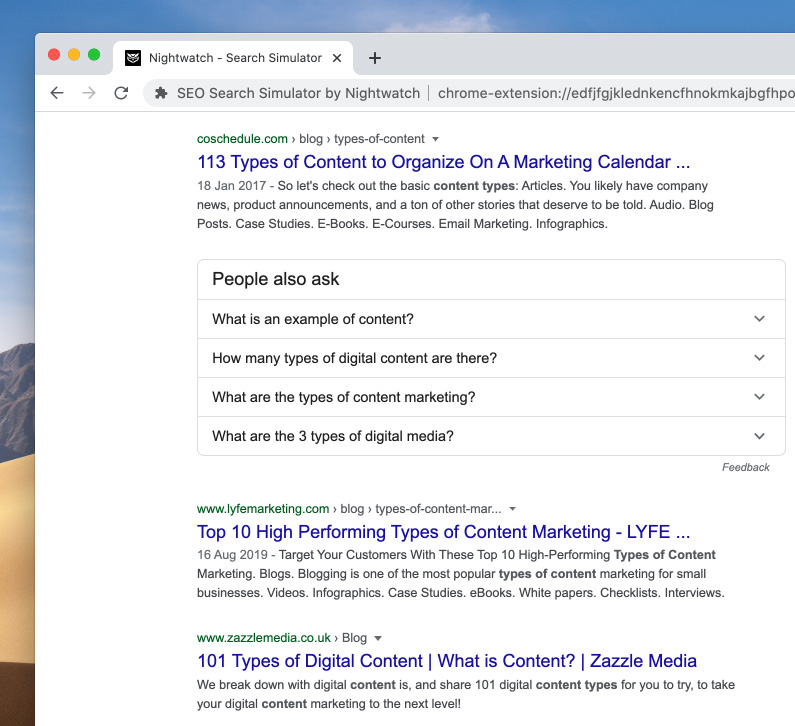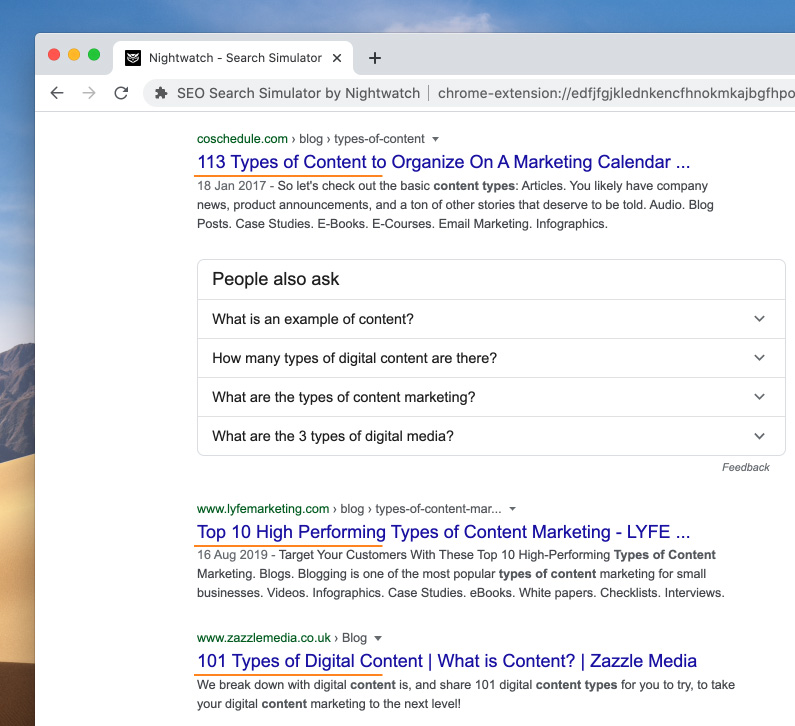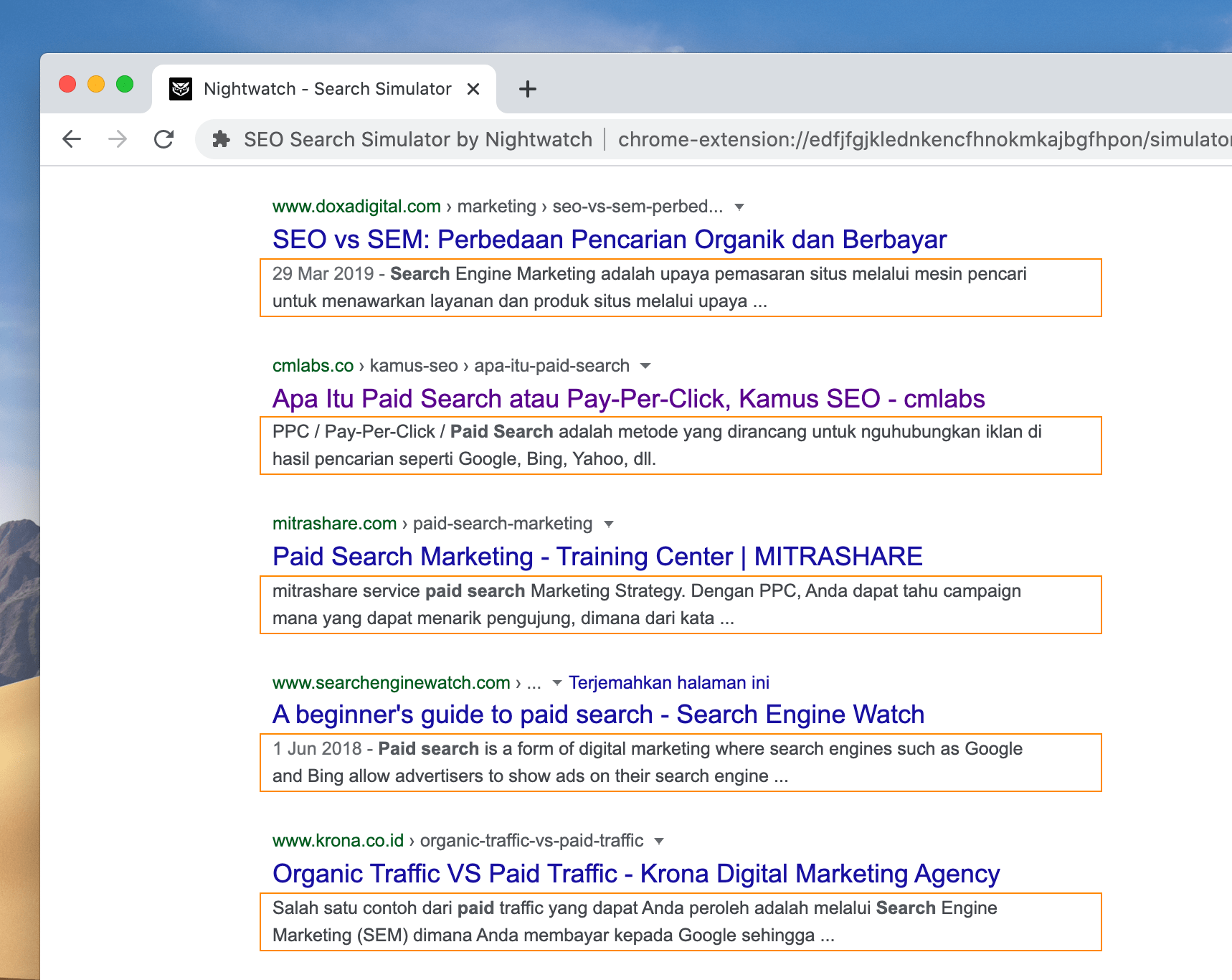We use cookies
This site uses cookies from cmlabs to deliver and enhance the quality of its services and to analyze traffic..
We use cookies
This site uses cookies from cmlabs to deliver and enhance the quality of its services and to analyze traffic..
Published at May 19, 2020 13:05

As a SEO copywriter, your target is not only writing optimized content for search engines, but you also have to make it persuasive for readers. In a way, you should be able to attract them to read your content.
Those two are the questions that need to be answered in SEO copywriting. You do not have to worry if you just start learning about copywriting. Here are five important phases that will guide you to optimize the content on your website:
Your content may be good, but if you use a generic title, its click-through rate can not reach its maximum potential. Do not waste an SEO content this way.
Many bloggers and SEO experts spend 40% to 55% of their time in content marketing. They do certain activities such as creating content, monitoring social media signals and consumers’ responses, tracking analysis, and many more. Then, how much time do you have to spend when deciding a title?
In SEO copywriting, the main title should be able to attract readers. It must influence them to click the link and read the content further.
If you want to learn to become a good copywriter, you must focus on things that readers pay attention to first, one of which is the title.
When you reach the top 10 rank on Google, the possibilities of your title to be clicked are quite high. If you have an article with an interesting title that ranks at 1st or 4th place, it can easily attract visitors to your site organically. An expert SEO copywriter usually creates a title before moving on to writing the content for the blog itself.
IMPORTANT NOTE
A title that delivers a message or special idea often attracts readers. Do you know that a title that includes numbers can always reach the highest position? If it is possible, you can use numbers in your titles.
Usually, titles with numbers are often shared on Facebook and Twitter.


There are several ways to write good titles that can attract high numbers of shares on social media. Let’s try to write several headlines in two sectors of popular business, which are small business and fitness.
Examples of small business titles that are attractive and able to be optimized:
Examples of SEO copywriting titles for fitness that may attract readers:
IMPORTANT NOTE
If you want all your titles to be indexed by search engines, their lengths should not be more than 72 characters. That way, the chances of your click-through rate to increase become higher.
Content is an important element in SEO copywriting. Users type the terms on Google and other search engines to look for high-quality content that are informative. This way, search engines will also try to display fresh and relevant SEO content. This is why you should be consistent in updating your site.
Marcus Sheridan managed to grow his swimming pool business site in 6 months. It originally attracted under 10,000 users. At the end, it received 80,000 visitors per month. He could increase the number of visits organically by producing content 2-3 times a week.
If Marcus started to target long-tailed keywords in his posts, the number of visitors could rise drastically. He said that “in a few hours writing articles that include certain target keywords, we manage to come up on the first page of Google.”
If you want to write the best content that can reach the highest rank on Google, you should target keyword phrases. Avoid using keywords or over optimize your content. Ideally, input the keyword in your title and make sure that it can be read clearly by the readers.

Google Panda 4.1 updates are designed to get rid of thin and generic content, which leads to low-quality content ranking lower on the Google SERPs. Good posts or articles should at least include 1000 words. However, word count should not only be the thing you care about. Hence, you should push specific articles to rank high and maintain their places on the Google SERPs.
Before you write SEO content, you should understand your readers. Then, you can write the story and focus on certain issues to solve for the sake of the readers. In this case, you can provide problem solving content by combining SEO and copywriting.
Every content you write needs an eye-catching introduction. It’s the part that appears at the beginning, right below the title or heading. An introduction should at least include target keyword phrases, or preferably long-tailed keywords.
One important thing in SEO copywriting is writing meta descriptions. Before writing content and publishing it, make sure to write the meta description to help the search engine algorithm locate your article. Meta description can help search engines and readers to understand the topic of the post and find it reasonable to read the target keyword and phrase further in the content.
Google uses the meta descriptions on your pages as a piece of information that can inform its bot or crawler. The descriptions will allow the search engine to connect the relevant keyword in the searches to your content.
That piece of information will determine whether users will click the articles or not regardless of your page’s position on the search engine result pages.

To comply with SEO needs, meta descriptions should consist of 150 – 160 characters. You can see that part under the title of the article on the SERP.
IMPORTANT QUESTION
How do you write meta descriptions that attract users and potentially get the articles in the highest position on Google?
Understand the meaning of keywords you use. Keywords are used to explain the topics of your content, whether it be seed keywords or long-tailed ones.
For instance, you work as a social media consultant and you want to attract potential clients for your business. In this case, you need to use the main keyword “advice from social media experts”.
Once your potential clients type the keyword on Google, what do you think they want to read? One clear thing is that they need advice from a social media expert regarding the strategies to improve the performance of their online business.
Perhaps users want to gain more followers on Twitter or increase their number of engagements. On the other hand, they may also look for tips to get more prospects regarding their business. This is why your meta description should be relevant with the search intent and able to attract users.
Once the article or the blog post has been made, the next step is to write the meta description. According to Swell Path, here are the things you should do in writing meta description:
SIMULATION, CREATE META DESCRIPTION
Let’s try to apply the tips! This time, we write two types of SEO-friendly meta descriptions that are relevant to the target audiences.
Raise the question
Are you looking for tips from social media experts to increase the number of visitors and grow your business? First, set the target you want to achieve.
Give a clear explanation
Many companies fail in social media marketing as they do not know what must be done. Therefore, help from an expert is what you need.
IMPORTANT NOTE
You do not have to use the exact target keyword in the meta description, moreover if it can not be read by users. There are many web pages that rank on the top ten of Google SERP without including the main keyword in their description.
Keyword frequency refers to the number or percentages of keywords in your web page. In SEO copywriting, this term is commonly known as Keyword Density.
For instance, if your target keyword is “the best hotel in Jakarta,” how many of those phrases appear in an article consisting of 300, 500 or 1000+ words? On the contrary, keyword density is related to the percentage comparison between “the best hotel in Jakarta” to the other keywords in the same page.
Frequency and keyword density are not as effective as they were beforeGoogle started applying updates periodically. Nevertheless, keyword frequency is still considered an important part in SEO copywriting. Avoid the mistake of over optimizing, such as accumulating keywords, excessive use of the same phrases whether it be within the description or the title tag.
Nevertheless, keyword density still affects the organic rank of a website page. According to Brian Dean, keyword density or frequency is one of 200 factors that affect page rank, which means you must consider its use in SEO copywriting adequately.
Link building is the foundation of your web page. It is one of the 10 things Google believes in, which is “there is more information out there.”
Providing links on your page let Google know that you are connected to a certain website. It also helps the search engine understand how important your content is and whether it is accessible to users. You can link pages on your sites or connect them to pages from other websites.
Linking other sites and pages to yours indicate that you appreciate the content the other creators put out there. Google will appreciate you for this because such an action fits their mission which is to control the information and give access to people universally. In this case, a good marketing team will always recommend the right link to strengthen a website.
Google Mission in 1998, “our mission is to organize the world’s information and make it universally accessible and useful”.
What copywriters usually do is look for proper keywords, conduct data research accurately, then combine the two of them to produce interesting content that attracts readers. This is what makes SEO copywriting one of the fundamental factors of content optimization for search engines.
There are no definite rules to link your content to other sites. Likewise, there are no obligatory rules in internal linking. However, as a smart content writer and marketer who wants to reach an achievement regarding SEO copywriting, you must do these things:
As explained previously, this rule is not managed by Google or other search engines. If you can understand your target audiences and produce the best content for your readers, then you do not have to worry about keyword frequency, link building, and social signals. At the end, everything will follow suit.
Do remember that informative and helpful content will always attract plenty of comments in social media, gain new clients, and increase revenues. That, alone, shows how important the role of an SEO copywriter is.
From the explanation above, we have summarized the five phases of content optimization. The phase started from (1) deciding the title of the article; (2) writing the content; (3) creating the meta description; (4) adjusting keyword frequency; (5) link building.
The five phases are the fundamental steps you should do to make sure your page performs optimally on the SERP. In addition to producing high quality content, you must also evaluate its performance periodically and see what types of adjustments you must do to make it perform better.
Thank you for taking the time to read my article! At cmlabs, we regularly publish new and insightful articles related to SEO almost every week. So, you'll always get the latest information on the topics you're interested in. If you really enjoy the content on cmlabs, you can subscribe to our email newsletter. By subscribing, you'll receive updates directly in your inbox. And hey, if you're interested in becoming a writer at cmlabs, don't worry! You can find more information here. So, come join the cmlabs community and stay updated on the latest SEO developments with us!
WDYT, you like my article?